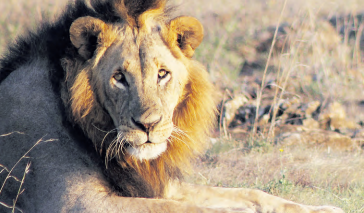
A wildlife manager has sounded a warning over the rising cases of lions attacking camels in Laikipia.
Kenya Wildlife Service assistant director for Laikipia Rose Malenya, said the attacks happen during the day when herders let their camels to graze.
The attacks and killings led KWS to organise, on October 24, the 14th Carnivore Conference at its headquarters.
The conference, themed ‘Carnivore Conservation in Changing Landscapes’, gathered diverse stakeholders committed to the conservation of Kenya’s iconic carnivores.
The meeting aims to address the pressing challenges faced by these species in the context of rapidly evolving environmental conditions.
It underscores the ongoing implementation of the second edition of the National Recovery and Action Plan for Lion and Spotted Hyena in Kenya, which is currently in its fourth year.
The theme reflected the urgent need to respond to habitat fragmentation, resource competition and human-wildlife conflict exacerbated by population growth.
Malenya shared statistics showing that in one year alone, there has been more predation than elephant destruction.
She added that between October 2023 and October 2024, there have been 1,264 reported cases, saying 338 cases were on predation.
Up to 729 cases recorded were on livestock affected with 36 per cent being sheep, goats ( 32.9 per cent). She said 41.3 per cent of cases were caused by leopard, hyena ( 3 0.3 per cent) and lions ( 20.2 per cent).
Malenya said Mugogodo and Doldol were the most affected areas.
The assistant director attributed the attacks to reduced hunting grounds and fragmented landscapes.
Malenya said they have fitted 26 collars to different wildlife in the area to help the service in management and monitoring.
“When we know where the carnivores are, it helps in mitigation as when signals are sent, herders redirect their livestock,” Malenya added.
Predator lights have come in
handy in helping the service curb
carnivore attacks.

![[PHOTOS] Kindiki inspects works at regional centre in Kwale](/_next/image?url=https%3A%2F%2Fcdn.radioafrica.digital%2Fimage%2F2025%2F04%2Fc68aa00b-39bc-4214-bafe-80e8e38b1e60.jpg&w=3840&q=100)








